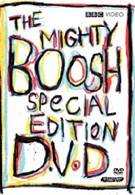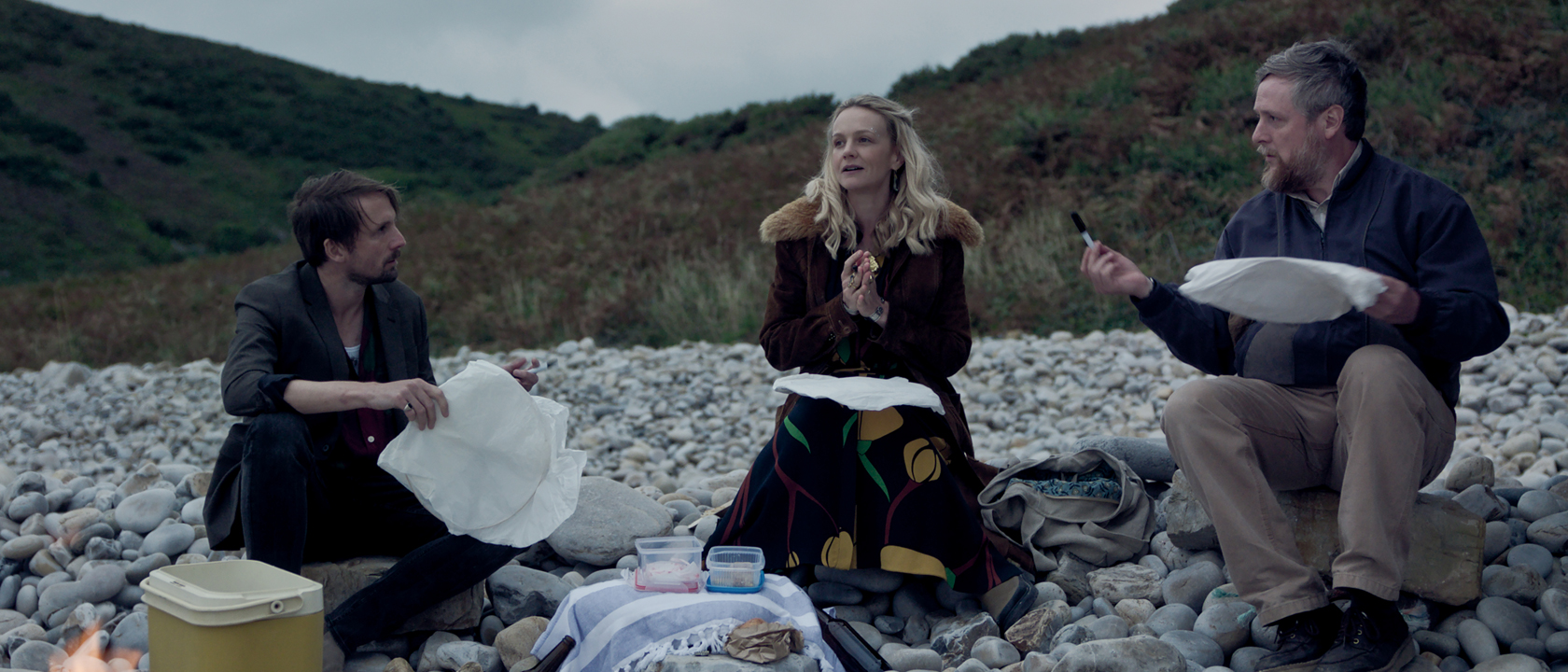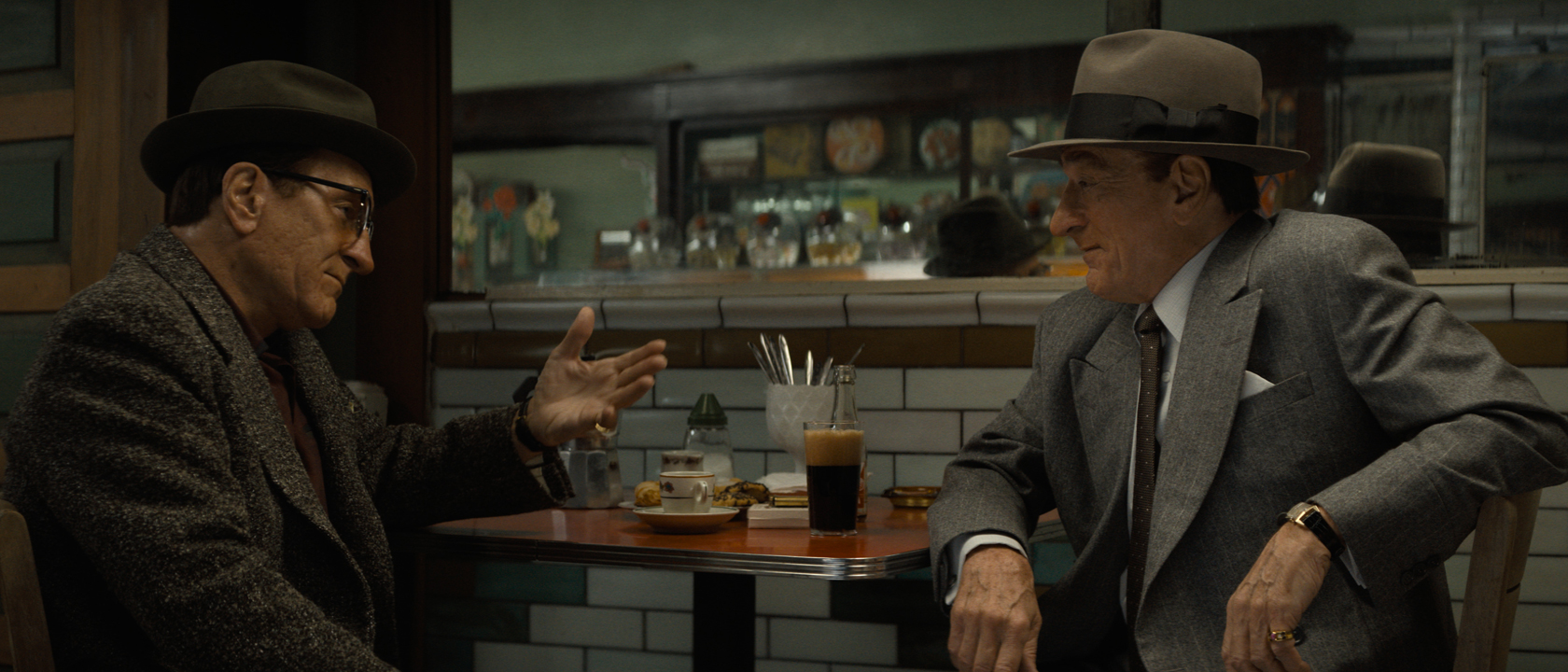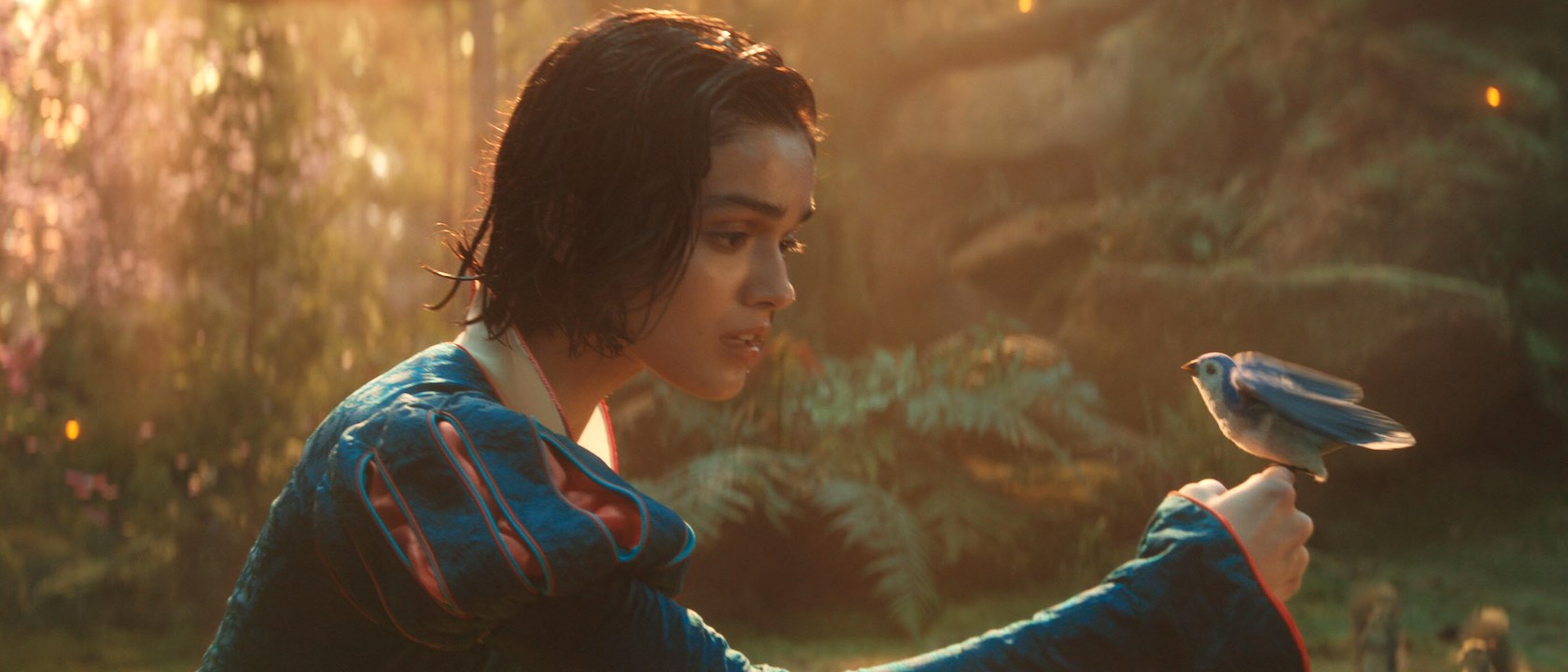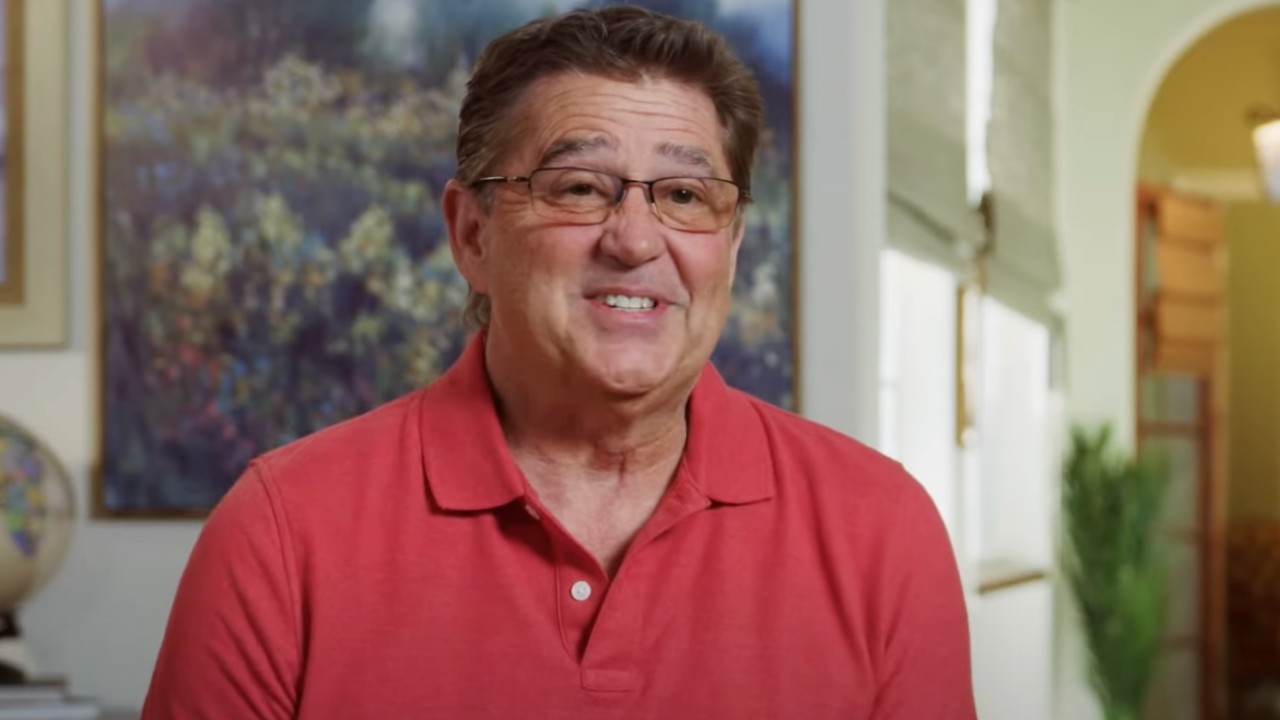The Mighty Boosh is one of those British imports whose first viewing is stumbling upon an unsought psychological treasure chest, or finding a message in a bottle written specifically to your inner child. The most comparable pieces of American fiction I can think of are the similarly inventive Wayside School books by Louis Sachs, or Pee-Wee's Playhouse, but those lack the fucking awesome Boosh music. The show reinvents the idea of "silly," and though it dips into dark scatological humor, most ages can get something from it. Barratt and Noel Fielding have created an unmatched combination of imagination and self-contained comedy. Characters Vince Noir (Fielding) and Howard Moon (Barratt) are so singularly defined in their eccentricities, that so long as their ridiculous motivations stay true, the otherworldly elements are all the more ordinary. A lot of people won't get the unsubtle humor and will be intimidated by the constant lack of inhibition, but it makes the core audience that much more groovy. I avoided the single-season DVDs released months back (even skipping the Adult Swim airings) in order to pick up this entire series set and watch it in uninterrupted bliss, and it was well worth the wait. Webster's Dictionary doesn't define "The Mighty Boosh," (speech class nightmare) but Noel Fielding explains that his brother, Mike, had notably curly hair at a young age, and a friend told him with a pronounced inflection that he had a "mighty bush." Hair is a constant point of relevance in the show, whether it's Vince's ever-morphing coif or Howard's tweedy 'stache, rumored to have taken him an entire month to grow. The entire concept began as a deconstructed comedy club act, which was then honed into a radio show, then set as a larger stage production; all of the writing was then molded and inserted into the pilot and first series. Regrettably, I haven't ever heard the radio show, but I will soon, to see just how well the unique dialogue and large-scale storytelling work without the fantastical sets and costume designs. I don't foresee disappointment.
In Series 1, Vince and Howard are employed by the Zooniverse under Bob Fossil (Rich Fulcher) and Dixon Bainbridge (Matt Berry). The authoritative powerhouse that is Matt Berry only appears a few times as the cocky, adventure-seeking zoo owner, but he steals every scene he's in, even against Fulcher's enormous overacting. Ninety percent of the show's potty humor spews forth from Fulcher, who fills in for many costumed roles when Fossil doesn't appear. This isn't to say that Fulcher isn't a gifted comedian (he's hilarious in the extras), but there are sides of barns that beg to be as broad as he. Our central duo often cross paths with the lisp-heavy, drug-dealing shaman, Naboo (Michael Fielding), and his talking ape, Bollo (Peter Elliot, then Dave Brown). This series focuses more on things going on in or around the Zooniverse, with the adventure-having more limited than in the later episodes, which is ironic, because the budget for the show shrank as the writing and direction got more ambitious. The Zooniverse set is a massive affair and is a nice launching pad for the many stories. Director Paul King explains that the idea was to make every possible location in the show look like it was shot on a set, and it shows, but the "cheapened" aesthetic becomes a large part of Boosh's charm.
In the second series, newly written for the screen, the pair have left the Zooniverse and drab green uniforms behind to take on their bizarre journeys from the comfort of their own flat. They share it with Naboo and Bollo, who become central characters in certain plot progressions, sometimes interacting with the Board of Shaman, of which Naboo is a member. Crazy-looking guys, they are, including Richard Ayondale of Garth Marenghi's Darkplace and The IT Crowd. The third series moves them downstairs into Naboo's "Nabootique," a trinket and specialty shop. While they tend to hang around the shop more than the flat in Series 2, the adventures grow larger, and mythologies are forged greater. There are so many memorable characters created, in the first year sure, but more so in these later episodes. The musical direction in the second two series is more esoteric, bleeding off from music-laden plot elements. It's a rare instance of something oozing pop-culture brilliance without referencing pop culture. There are a few name-checks, but more in music than obscure, unfamiliar regions of the British mindscape. The universe of The Mighty Boosh exists while all other surrounding universes lay in wait for its characters to make their appearance.
Let's go over these characters your cooler friends are quoting. Vince Noir is one shameful doctor away from being a woman, with his gaudy fashion sense (somehow always more colorful than the exquisitely hued sets) and gay club action sense. His trend switches from New Wave, to Goth, to Punk, to Unicorn, to Ampersand, etc. Julian Barratt as Howard is a funnier character to me, but Noel Fielding is an extraordinary character actor (he plays dozens of antagonists and oddball cameos), even if Vince is a drastic extension of his own personality. Howard Moon comes at you like a storm, like a wolf, like a...moon. He's learned in all sub-genres of jazz, and is even inhabited by the Spirit of Jazz, one of Fielding's repeating champions of costume. Howard is self-serving, and is generally the foil of every situation, despite having quite pure intentions, while Vince is nothing but selfish. The two are impossible to describe in words and not visual examples. They make no sense as friends, but are the most natural fit as a comedy team. Naboo and Bollo are very amusing in their context. All of Fulcher's "I just snorted Robin Williams' blood" characters are well suited for one-liners, and a sublime a cappella duet with Bainbridge singing a piece from "Total Eclipse of the Heart," which rivals The Dan Band's version for laugh factor.
There's a Wikipedia page for all of the minor characters in the Boosh universe, so...deep inhale. Most popular would probably be Old Gregg, Fielding's Deliverance-lite merman hiding below Black Lake, whom Howard manages to snag while fishing. He's a hilariously perverted creature who falls for Howard and makes a rowboat a very sad place to be indeed. Fielding also plays a non sequitur Moon in the second two series, one who wears a shaving cream face and rambles similarly to Jack Handy's Deep Thoughts, but simpler. The Spirit of Jazz makes a few appearances, and is always a fright. There's an amazing episode called "The Priest and the Beast" that has Naboo trying to inspire the Boosh's musical direction with the story of the band Rudi & Spider, two Doors-Hendrix-Santana desert dwellers who are trying to find the new sound. The visuals of the two scream wall poster. Rudi has a small door to the subconscious in the middle of his enormous afro. They fight a Betamax monster made of cassette tape. There are an entire cast of Bainbridge's mutants. There are more Naboo fable characters shown in different animations; differing in style, but always high in quality. Bubble Gum Charlie is both animated and live, and is a prosthetic treat on the eyes. There are Boosh Doppelgangers Lance Dior and Harold Broom. There's the Crack Fox. There's the Black Frost, and the Grim Reaper. The inspired takes on these characters can't be described in the bottom of a paragraph.
My favorite weirdo character is Fielding's Hitcher, wearing a top hat, panted entirely green except for the white stripe beneath the giant Polo mint covering one eye. He is a ghoul of a creature and would probably have unnerved me as a child. In the first episode of the third series, "Eels," he inspires two minutes of media creepier than David Lynch's movies or David Letterman's sex life. "Did you see Elsie, boy? Did you dance with her? Sure you did. We all did." (Scream!) My favorite episode, though, is "The Nightmare of Milky Joe," a morbid tale where the Boosh get stranded on a desert island and maniacally start to believe in the stick-and-coconut people they create. Howard's song, "Isolation," written just before the madness, is epic drone. The episode is just so well written and loony, even compared to the others that are so far out there, that I suppose it's the subtle notions of realism that I internally agree with the most. And it goes from farce to grim so quick, it's funny bone-jarring. The seven-disc set comes in a color Fielding-art box, accompanied by a sheet of about two dozen Boosh stickers, four postcard sketches, two full colors of Old Gregg scenes, and two pen sketches of unrealistic Howard Moon playing Jazz scenes. There's also a full-color booklet with Fielding's drawings of characters and disc menus. The seventh disc is exclusive to the full-series set, and it comes with many extras, which I'll have to just list without much talk, because there are an uncanny amount.
Each series has the following features: subtitles, audio commentaries (heavy on the humor) for all but five of the Series 1 episodes; a half-hour long "Making of the Series" for each, with the great set and costume talks; a lengthy publicity feature, with the cast doing radio and talk shows, signings, and print interviews; creative photo galleries; outtakes; and all the great musical moments, all in choosable formats. Series 1 has "History of the Boosh." Series 2 and 3 have deleted scenes. Series 2 has the Boosh Pilot, a pre-working of the "Tundra" episode in front of a live audience, which was weird. There's also a short film, Sweet, starring the two that deals with Fielding character creating an imaginary lover that causes tension. Series 3 has a promo for the band Mint Royale, where Fielding rocks out to a song in the car while the rest of the group robs a bank. Needless to say, it wouldn't be on here if it weren't worth it's weight in great, so everything should be experienced.
The additional extras disc is has a playful menu that you navigate through, clicking onto different visuals that come up. Each page has 1-3 extras. They are as follows: a lengthy Q&A session, Bob Fossil Zoo announcements, pilot episode deleted scenes and outtakes, a Boosh marathon's TV links, a collection of crimps, a making of the Sammy the Crab character, an acceptance of a Royal Television Society Award, scenes from a late '90s sketch show the group were involved with called Unnecessary Acts, and other small tidbits. The best part, though, is the "A Journey Through Time and Space" hour-long documentary about the origins and exploding popularity of the show. Loads of great stuff here.
The set is cheaper than buying all three series, and has more shit on it. There's math involved. The show is already getting a huge audience in the states, so this review may feel belated, but the completist in me is coming at you like a mist, like a cloud, like a vapor. Those of you holding out for an American remake are going to have to wait until the end of forever, so pick it up.
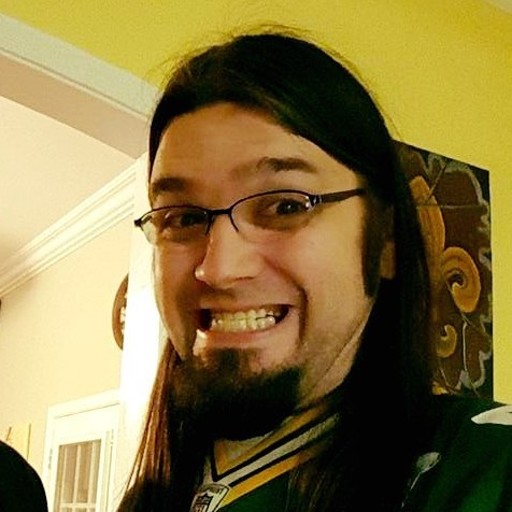
Nick is a Cajun Country native and an Assistant Managing Editor with a focus on TV and features. His humble origin story with CinemaBlend began all the way back in the pre-streaming era, circa 2009, as a freelancing DVD reviewer and TV recapper. Nick leapfrogged over to the small screen to cover more and more television news and interviews, eventually taking over the section for the current era and covering topics like Yellowstone, The Walking Dead and horror. Born in Louisiana and currently living in Texas — Who Dat Nation over America’s Team all day, all night — Nick spent several years in the hospitality industry, and also worked as a 911 operator. If you ever happened to hear his music or read his comics/short stories, you have his sympathy.
90 Day Fiancé's Mina Found Out About Mark's Troubled Past Relationship, But Are They Still Together?
Suits LA Brought Back Harvey Specter To Set Up Another Suits Character Coming In, But The Ending Twist Especially Threw Me For A Loop
The Last Of Us Season 2 Premiere Watchalong: I'm Talking Joel And Ellie Awks, Video Game Moments, That Kiss And More
